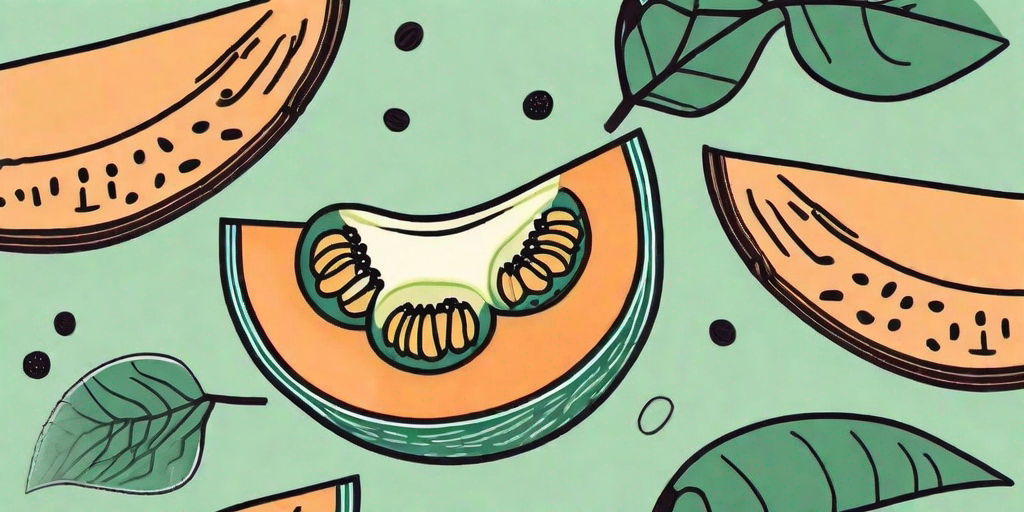
Ever wondered how to turn a simple cantaloupe seed into a thriving, fruit-bearing plant? Well, buckle up, because you're about to embark on a journey from seed to success. We're talking about cantaloupes here, folks. Those sweet, juicy orbs of delight that make summer salads sing and breakfasts feel like a tropical vacation. So, let's dive in, shall we?
The Life of a Cantaloupe Seed
Before we get our hands dirty, let's take a moment to appreciate the humble cantaloupe seed. It's small, it's hard, it's... not much to look at, really. But inside that unassuming exterior lies the potential for a whole cantaloupe plant. It's like the Clark Kent of the plant world.
Seeds are essentially baby plants in hibernation. They're waiting for the right conditions to wake up and start growing. For cantaloupe seeds, this means warm soil, plenty of sunlight, and a bit of water. Not too much, mind you. They're not into water sports.
Harvesting Cantaloupe Seeds
So, where do you get cantaloupe seeds? Well, you could buy them, sure. But where's the fun in that? No, the real joy comes from harvesting your own seeds from a ripe cantaloupe. It's like a treasure hunt, but the treasure is seeds and the map is a melon.
First, you'll need to scoop out the seeds. Yes, it's a bit messy. Yes, you'll probably get some on your shirt. But think of it as part of the adventure. Once you've got your seeds, rinse them under cold water to remove any remaining pulp. Then, spread them out on a paper towel to dry. This could take a few days, so be patient. Rome wasn't built in a day, and cantaloupe seeds don't dry in an afternoon.
Planting Your Cantaloupe Seeds
Now that you've got your seeds, it's time to get planting. But before you start digging holes willy-nilly, there are a few things you should know.
Firstly, cantaloupes are warm-weather plants. They're not fans of the cold. So, if you live somewhere that gets frost, you'll want to start your seeds indoors about a month before the last expected frost. If you live somewhere warm, you can sow your seeds directly into the garden.
Indoor Planting
For indoor planting, you'll need some small pots or seed trays filled with potting soil. Plant your seeds about 1 inch deep and water them well. Then, place them in a warm spot, like on top of the fridge or near a heater. Remember, these seeds like it hot.
Once your seedlings have a couple of true leaves (those are the ones that look like actual cantaloupe leaves, not the first little sprouts), you can transplant them into the garden. Just make sure the danger of frost has passed. Cantaloupes are not fans of the cold, remember?
Outdoor Planting
If you're planting directly into the garden, choose a sunny spot. Cantaloupes are sun-worshippers. They need at least six hours of sunlight a day. Plant your seeds about 1 inch deep and 18 inches apart. Then, water them well and wait for the magic to happen.
And by 'magic', I mean 'germination'. This usually takes about 3-10 days, depending on the temperature. Remember, the warmer it is, the faster your seeds will sprout.
Caring for Your Cantaloupe Plants
So, you've got your seeds in the ground. Now what? Well, now you wait. And water. And maybe do a little weeding. Growing cantaloupes is a bit like babysitting. It's mostly just making sure they don't get into too much trouble.
Water your plants regularly, but don't overdo it. Cantaloupes like a good drink, but they don't like to sit in water. So, make sure your soil drains well. If your plants start to look a bit yellow, they're probably getting too much water.
Feeding Your Cantaloupes
Cantaloupes are heavy feeders. They need plenty of nutrients to grow those big, juicy fruits. So, give them a good feed with a balanced fertilizer every couple of weeks.
And don't forget about pollination. Cantaloupes need bees to pollinate their flowers. If you're not seeing many bees around, you might need to play matchmaker and do a bit of hand pollination. Just take a small paintbrush and transfer some pollen from the male flowers (the ones without the little fruit behind them) to the female flowers (the ones with the little fruit).
Harvesting Your Cantaloupes
After all that hard work, it's finally time to reap the rewards. But how do you know when your cantaloupes are ready to harvest? Well, there are a few signs to look out for.
Firstly, the color. Ripe cantaloupes will be a uniform light tan color, with no green spots. Secondly, the stem. It should be easy to pull the fruit from the vine. If you have to tug, it's not ready. And finally, the smell. Ripe cantaloupes have a sweet, musky smell. If it smells like cantaloupe, it's probably ready to eat.
So there you have it. From seed to success, that's how you grow cantaloupes like a pro. Now, go forth and grow!
FAQs
Can I grow cantaloupes in a pot?
Absolutely! Just make sure it's a big pot, as cantaloupes need plenty of room to grow. And remember to water and feed regularly.
Why are my cantaloupes not growing?
There could be a few reasons. It could be a lack of sunlight, poor soil, not enough water, or not enough pollination. Try to figure out what's missing and fix it.
Can I save seeds from a store-bought cantaloupe?
Yes, you can! Just make sure it's a ripe, healthy fruit. And remember to dry the seeds thoroughly before planting.











